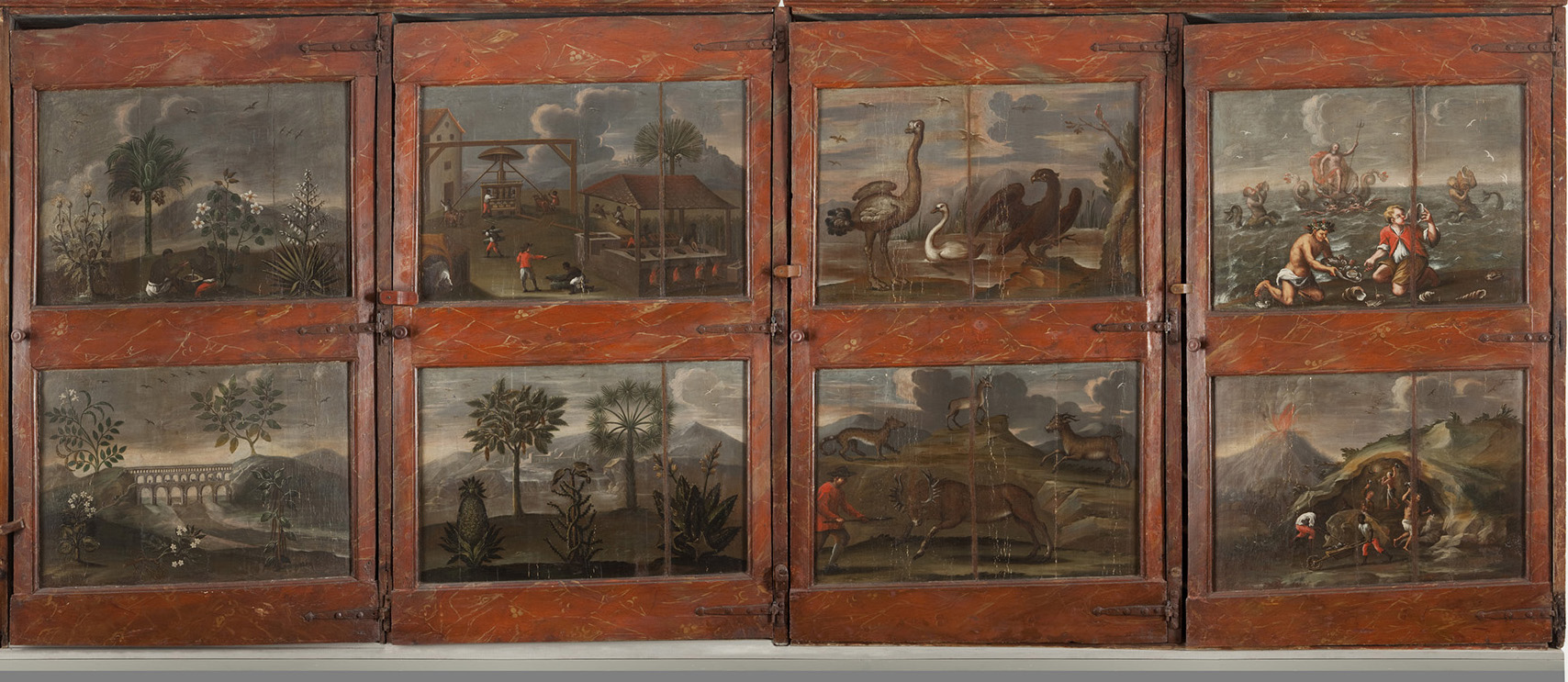The strange object labelled Lapis Bezoar ex Iguana rests today in the reassembled cabinet of medicinal curiosities that was kept for centuries in the back room (rebotica) of the Salvador family apothecary in Barcelona, Spain. This particular object, and indeed all those called bezoars, was believed to possess medicinal powers. But by what criteria was this bezoar stone placed in the reserved cabinet or rebotica collection rather than on the open, commercial shelves of the apothecary? Where was the line drawn between the marvellous or curious object and the commercial commodity that could be readily sold as medicine in the dispensary? This line reflects both the presentation and disenchantment of nature that followed from the first globalisation, while the ex-iguana bezoar stone registers the ambiguities of authenticity in the Indies. In truth, there was no fixed line between the marvellous and the mundane, or indeed between the authentic and the fake; instead, there was a continuous movement, reflecting the changing state of knowledge, geopolitical realities and the private interests of those who curated the collection and ran the apothecary.
BEZOAR IN BARCELONA CABINET
Panel of the Salvador cabinet designed by Josep Salvador i Riera (1690–1761) and containing the bezoars (courtesy of the Institut Botànic, Barcelona (IBB); photo by N. Hervás).
Jose Pardo-Thomas
Further reading
- Delbourgo, J. (2018) Collecting the World: The Life and Curiosity of Hans Sloane (London: Penguin Books).
- Egmond, F. (Forthcoming) ‘Plants and medicine’, in A Cultural History of Plants in the Early Modern Period (1400–1650), edited by A. Dalby (London: Bloomsbury, Cultural Histories Series).
- Ibáñez, N., J.M. Camarasa, and E. Garcia (eds.) (2019) El Gabinet Salvador: un tresor científic recuperat (Barcelona: Museu de Ciències Naturals-Institut Botànic).
- MacGregor, A. (ed.) (2018) Naturalists in the Field: Collecting, Recording and Preserving the Natural World from the Fifteenth to the Twenty-First Century (Leiden: Brill).
- Margócsy, D. (2014) Commercial Visions: Science, Trade, and Visual Culture in the Dutch Golden Age (Chicago, IL: University of Chicago Press).
- Morcelli Oliveros, J. (2019) Americana en la rebotica: comercio, redes epistolares y comunicación científica en el Gabinete Salvador (Barcelona, 1669–1726), PhD dissertation (Bellaterra, Universitat Autònoma de Barcelona).
- Pardo-Tomás, J. (2014) Salvadoriana: el gabinet de curiositats de Barcelona; The Cabinet of Curiosities of Barcelona (Barcelona: Ajuntament de Barcelona).
- Stephenson, M. (2010) ‘From marvelous antidote to the poison of idolatry: the transatlantic role of Andean bezoar stones during the late sixteenth and early seventeenth centuries’, Hispanic American Historical Review, 90 (1): 3–39.
- Stols, E., W. Thomas, and J. Verbeckmoes (eds.) (2006) Naturalia, mirabilia & monstrosa en los Imperios Ibéricos (siglos XV–XIX) (Leuven: Leuven University Press).
- Walker, A., A. MacGregor, and M. Hunter (eds.) (2012) From Books to Bezoars: Sir Hans Sloane and His Collections (London: British Library).
- Yaya, I.M. (2008) ‘Wonders of America: the curiosity cabinet as a site of representation and knowledge’, Journal of the History of Collections, 20 (2): 173–88.





